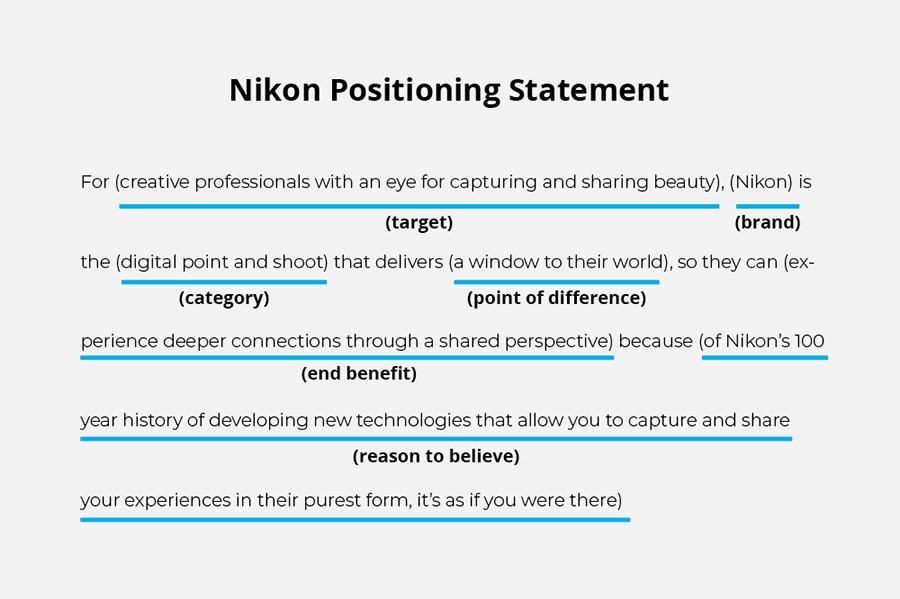As a small business owner or marketing team member, your priority is acquiring new customers and scaling your business. You have to find ways to get your brand, products, and services out there in front of your target market.
You have to make people aware of your business and help them find you easily, and the only way to accomplish this is by creating an effective marketing strategy.
Otherwise, your company might end up without any direction, causing you to squander resources on tactics and channels that won’t yield positive results.
Understandably, it can be challenging to develop a strong marketing strategy from scratch. To help ease some of the doubt and confusion that accompanies the process, this post will show you the important steps you need to take to develop a powerful strategy to guide your marketing efforts.
What is a marketing strategy?
A marketing strategy is a comprehensive plan that outlines the goals and directions of your company’s marketing tactics and the specific actions you’ll take to execute them.
It’s the process you’ll use to understand your market fit, who your customers are, and the best way to reach and motivate them to take action before your competitor beats you to it.
Your marketing strategy includes any online or offline activity that helps your business gravitate towards its long-term or short-term goals.
It not only informs the kind of campaigns you create or tactics you implement to get your target audience to pay attention. It also explains how you’ll measure your activities, determine success, and refind your efforts going forward.
Steps to ace your marketing strategy
Strategic marketing involves several moving parts that need to be considered to create a cohesive game plan. The effectiveness of your strategy depends on how you position yourself, who you target, where you target them, and the value you have to offer.
Creating a marketing strategy centered around the following steps will help you nail these factors to a tee, keep your marketing activities focused, and make the most of your resources.
1: Define your marketing philosophy
How highly will your business value marketing? What will your attitude be towards it in good and rough times?
This is your marketing philosophy.
Some companies see marketing as a hungry beast that devours resources to provide collateral instead of treating it like a revenue-generating engine that drives growth and connects the brand with consumers.
As a result, they don’t invest in it and quickly slash their marketing budget when trouble arises. On the contrary, businesses making waves on the lead generation, customer acquisition, and brand awareness drive have a philosophy regarding marketing as a necessary investment.
So the first thing you need to do on the road to building your marketing strategy is to decide that marketing is fundamental to your business’ expansion goal. And fully committed to implementing the right tactics to boost success.
2: Identify your mission, goals, and objectives
Your business needs to have something you’re working towards. Otherwise, how are you ever going to know whether you’re succeeding? Or what can you do to turn the tides in your favor?
Before making any other moves, you must define your company’s goals, objectives, and mission. This will allow you to stay the course with your marketing strategy at all times.
Start by dividing your goals into two categories:
Business goals — These are the larger goals that your company hopes to achieve. For example, your main aim might be to claim the largest market share, be the go-to brand for a product or service in your industry, or reach a billion-dollar valuation.
Marketing objectives — These are smaller goals that can move you closer to achieving your business objectives with the idea of marketing. Creating brand awareness, increasing email list signups, generating high-quality leads are some examples of marketing goals.
Use the SMART framework to outline your goals.
Specific – Leave no room for ambiguity when crafting your goals. Tie each objective to specific figures or hard numbers. For instance, I want to increase website traffic by 25% and generate 500 new leads in the next four months.
Measurable — You need to track your goals and determine the failure or success of your marketing efforts using data.
Achievable — They should be realistically attainable. If you’ve never made $500,000 in sales annually, it’s not realistic to say you want to make $250,000 sales in one month.
Relevant — Your goals should be related to or aligned with your business.
Time-bound — Make sure you specify the time frame during which you aim to achieve each goal.
Don’t forget to craft your mission statement—the why what, and how of your organization. Your mission should state why your business exists, what you want to accomplish or the problem you want to solve, and how you’re going to make this happen.
3: Do your research on the industry
Please don’t assume you know who your customers are or what needs they have. Or your market fit or even what your competitors are up to.
Your marketing strategy should be built on cold, hard facts, not gut feelings and guesswork. Always research to get a clearer picture of the market, your place in it, and how you can take advantage of opportunities to boost performance and scale.
Although extensive research is best, you’ll still be better off with hurried, inexpensive market research than none at all.
Before you flesh out your marketing strategy, here are some critical data points you need to research.
Qualitative market data
Conducting qualitative market research will help you understand your customers’ points of view, beliefs, and motivations. It tells you how they feel about a product, service, or issue and the factors influencing their decisions or behaviors.
There are many ways to gather qualitative market data, but the most effective methods are through interviews and focus groups.
Talk to potential and existing customers to hear their thoughts on what you’re selling. Go to places where people buy your products either online or in brick and mortar stores and observe their comments or reactions. Search for digital forums and platforms on which your products are reviewed or discussed and note down what people say about your brand and your competitors.
With focus groups, you need five to ten people and an experienced moderator who will ask them questions. Or get them to respond to images and videos to gather insights on what they think about a product, service, brand, copy, imagery, or packaging. Focus groups can be done remotely or in person.
Quantitative market data
Quantitative market research is a way of asking questions to gather data about your target audience in an organized manner. You can collect this data through surveys, questionnaires, and polls.
Leverage quiz software to conduct quick and easy online surveys. All you have to do is distribute the surveys via social media, your website, email list, or even paid ads to get people to fill out the forms.
Make sure you ask the right questions that’ll reveal important information about your audience. This includes their age, gender, income, location, preferences, pain points, and more. You might also be interested in attitudinal information, like whether they disagree or agree with specific statements related to your brand, product, or niche.
Include questions to help you identify people who fit your ideal customer profile. Also, use a sample size calculator to determine the number of survey participants you need to get confident and accurate data.
Market segmentation
You probably have different kinds of consumers that are interested in your product or service. To better understand who they are and how you can appeal to each, it’s vital to segment them based on shared traits/behaviors.

Create a name for each customer segment describing their common needs or traits to identify them easily. Highlight the size of each group. If you service both individuals and customers, categorize them separately.
Don’t forget to include the annual revenue value that each segment brings in and the market share your business holds for each. Your market segmentation data will improve your targeting capabilities. So you can create messages that resonate with each customer group and drive them to take action.
Competitive analysis
Understanding who your competitors are and their marketing approach can help you identify opportunities to set yourself apart.
The good news is you don’t have to engage in corporate espionage to ferret out information about who your business is up against. A simple search of relevant keywords in your industry or niche will reveal your competitors.
Gather as much data as you can about them via their website, app, press releases, reviews, or comments on social media and other online communities. Check out their products and services. Dig into their brand positioning and customer targeting.
What’s their user experience or branding like? Are they doing a great job of engaging their target audience? What kind of content are they putting out there? What communication strategies are they implementing? Which channels are they using to distribute their messaging and market their brand?
Perform a SWOT analysis. Figure out what they’re doing better than you and where their weaknesses lie. These insights will give you a better mental view of how you can improve your business and dominate the market.
4: Create marketing strategies
Based on the market research you’ve done and the goals you’ve outlined in the above steps, it’s time to develop strategies for attracting and retaining customers.
Your strategy should outline or map showing how you plan to reach your set goals and objectives.
One of your goals is to boost awareness of your products amongst young millennials and gen z audiences. Your strategy for achieving this could increase your presence on social media platforms like Instagram, TikTok, and Twitter.
You can post regular updates on these channels. Host giveaways and contests, get influencers to promote your products, or offer special discounts for students.
The marketing strategies you choose will depend on your industry or niche as well. The strategies for marketing a SaaS business may not be suitable for marketing a brand that sells clothing or ice cream.
Please pay attention to the techniques your competitors are using that seems to be producing significant results and adapt them for your business.
5: Nail down your tactics
After determining the strategies you’ll use to move the needle towards your goals, it’s time to note the tactics that’ll help you get the job done.
Tactics are the strategic actions that you’ll execute to produce the marketing results you desire. The first and most important tactic that you need to devise is:
Proper brand positioning — How you position your brand will inform your product offering, messaging, content, tone, pricing, voice, personality, campaigns, and distribution channels. Work with brand designers to create strong brand visuals and identity. Think of what sets you apart and why people should buy your product or service and note it all down.

Since you don’t have endless hours or resources to invest in every marketing tactic, you must prioritize the most important strategies for your business. Then create corresponding tactics that can maximize performance and produce the best results for your specific goals.
Some winning marketing tactics that your company can benefit from include:
- Regularly publishing blog posts, ebooks, infographics, white papers, case studies, and other types of content.
- Creating product videos on YouTube to promote your brand or educate your audience.
- Using email newsletters to build and nurture relationships with potential and existing customers and drive conversions.
- Running pay-per-click ads.
- Building engaged online communities with Facebook and LinkedIn groups.
- Leveraging the influence of social media personalities to boost brand awareness and product sales.
- Keyword-optimizing your landing pages and content to rank higher on search engines.
6: Work with a feasible budget
Even if you had Neil Patel, Brian Dean, and Chris Beckwith-Taylor on your marketing team, you wouldn’t be able to fire up all your strategies and tactics without any money.
You need to earmark a reasonable amount of money for marketing and decide how much you’ll spend on various channels and tactics. Knowing the budget, you have to work with will enable you to distribute your resources to adequately get the results you seek. It’ll also allow you to calculate how much you’re getting in return for every dollar invested.
Your company’s marketing budget should be influenced by your aspirations, how quickly you want to scale, and your willingness to do what is necessary to grow.
Money isn’t the only factor to consider when creating your marketing budget. Ensure you factor in resources like the human resources and time required to affect your strategies/tactics.
7: Implement your strategy
At this point, you should be able to visualize how your marketing strategy will be implemented. It’s time to put all your planning into action.
Create a process map that outlines the tasks you need to complete to execute each campaign or tactic. Having structured workflows and repeatable processes for executing marketing projects can improve your work efficiency, quality, and consistency.
Investing in the right tech tools can go a long way in helping you automate tasks and implement tactics effectively.
8: Repeat your successes
Strategic marketing is not a one-off affair that you try out and forget about the next day. It requires continuous effort. It would be best to keep refining your strategies and monitoring performance to ensure you’re achieving your aims.
Don’t forget to track relevant social media KPIs and metrics. This will enable you to measure the success of your tactics and how you’re progressing towards your goals and overall business objectives. Try to review your performance monthly, at the very least. So you can quickly switch tactics if necessary and avoid wasting too many resources on an ineffective plan.
If a tactic seems to be working for you, keep at it. Look for areas where you can make improvements. Analyze campaigns that didn’t produce desired results to see why they underperformed. Then apply those insights to future campaigns to produce better outcomes.
Conquer your industry
No matter how unique or amazing your product is, customers aren’t magically going to fall into your hands. It would be best to get them to notice and patronize you before revenue can start pouring in.
Developing a winning marketing strategy is not a process you want to rush. Take your time. It’s okay if it takes you weeks or months to create a strong strategy. Your efforts will lay the foundation for success in the long run.
Since your market, customers, competitors, and positioning are subject to change, make sure you evaluate your strategy once a year. This will ensure that you’re working with fresh information at all times and are equipped to make the most of your marketing campaigns.

